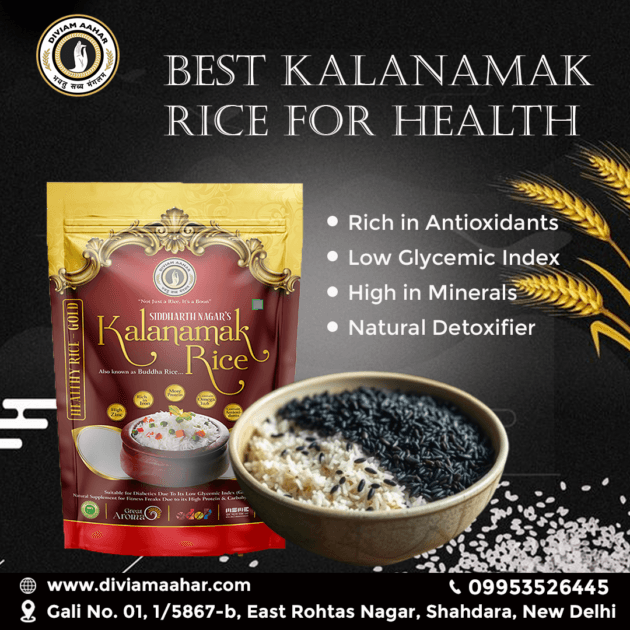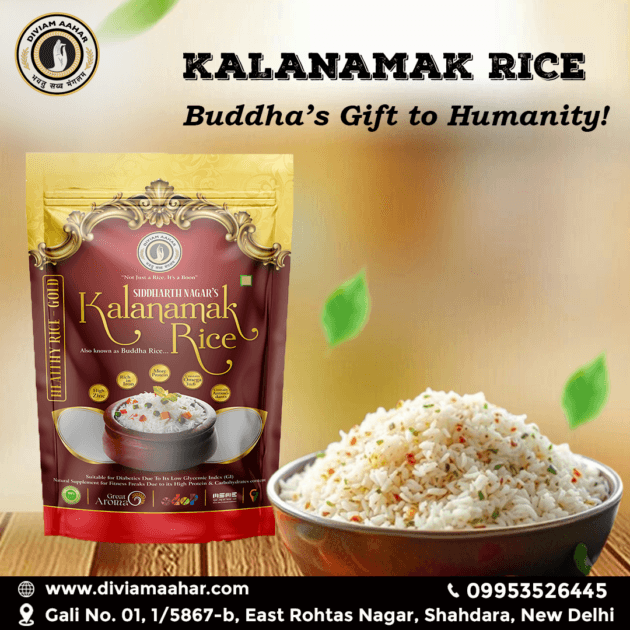India, with its rich rural legacy, is home to different novel grains that mirror the country’s assorted culture and customs. Among these fortunes is Kalanamak rice, a less popular yet exceptional assortment that has been venerated for a really long time. On the off chance that you’re interested about what compels Kalanamak rice so unique, you’re going to leave on an intriguing excursion.
The Legacy of Kalanamak Rice
Kalanamak rice, frequently alluded to as the “Dark Pearl of Uttar Pradesh,” is a legacy grain that begins from the Terai district, including portions of Uttar Pradesh and Nepal. This sweet-smelling rice assortment flaunts a set of experiences going back north of 2,000 years. Its name is gotten from two Hindi words: “Kala,” significance dark, and “Kalanamak Rice,” importance salt. The grain’s dim husk and special pungent flavor are key attributes that recognize it from other rice assortments.
Rumors from far and wide suggest that Gautama Buddha gifted Kalanamak rice to individuals of Kapilvastu (present-day Siddharthnagar region in Uttar Pradesh) as a badge of good wellbeing and thriving. Throughout the long term, this rice has been commended for its excellent taste as well as for its medical advantages.
Characteristics of Kalanamak Rice

Appearance
Kalanamak rice stands apart for its blackish husk and medium to little measured grains. At the point when cleaned, the grains gain a magnificent white tone with a slight sheen, making it outwardly engaging.
Nutritional Profile
One of the most striking elements of Kalanamak rice is its fragrance. Its scent, frequently contrasted with the fragrance of popcorn or pandan leaves, is credited to a compound called 2-acetyl-1-pyrroline. The flavor is similarly momentous, offering an inconspicuous nuttiness and a sprinkle of pungency that makes it a number one among gourmands.
Healthful Profile
Kalanamak rice is a force to be reckoned with of supplements. Wealthy in iron, zinc, and cancer prevention agents, it is especially useful for supporting resistance and further developing absorption. It is likewise low in glycemic file, going with it a reasonable decision for diabetics.
Why is Kalanamak Rice Unique?
Geological Importance
Filled in the fruitful fields of the Indo-Gangetic belt, Kalanamak rice flourishes in the mineral-rich soil and positive climatic states of this area. The terroir altogether impacts its quality and flavor.
Reasonable Cultivating Practices
Customarily developed utilizing natural techniques, Kalanamak rice cultivating accentuates manageability. Ranchers keep away from synthetic composts and pesticides, guaranteeing that the rice stays liberated from destructive deposits.
Safeguarded Geological Sign (PGI)
In 2013, Kalanamak rice acquired the renowned PGI tag, perceiving its one of a kind beginning and characteristics. This status safeguards the grain from impersonations and guarantees that main rice filled in assigned regions can be marked as Kalanamak.
Health Benefits of Kalanamak Rice

Wealthy in Cell reinforcements
The rice is high in cell reinforcements, which assist with combatting free revolutionaries and lessen the gamble of ongoing sicknesses.
Helps Assimilation
Its high fiber content guides absorption and advances stomach wellbeing.
Upholds Bone Wellbeing
Kalanamak rice’s rich iron and zinc content add to more grounded bones and better insusceptibility.
Low Glycemic Index
This component settles on it an amazing decision for people overseeing diabetes or those hoping to keep up with stable glucose levels.
Culinary Uses of Kalanamak Rice
Kalanamak rice’s flexibility makes it a superb expansion to different dishes. Here are a well known ways of integrating it into your feasts:
Pilaf and Pulao
Its sweet-smelling profile improves the kinds of pilafs and pulaos, making them more liberal.
Khichdi
An encouraging bowl of Kalanamak rice khichdi isn’t simply heavenly yet additionally nutritious.
Pastries
The rice’s normal pleasantness and fragrance make it ideal for kheer and payasam.
Plain Steamed Rice
Some of the time, effortlessness is vital. Steamed Kalanamak rice matched with curries or dals is a perfect pair.
Challenges in Cultivating Kalanamak Rice
In spite of its many benefits, Kalanamak rice faces a few difficulties:
Low Yield
Contrasted with mixture assortments, the yield of Kalanamak rice is moderately low, making it less appealing to ranchers.
Market Mindfulness
Absence of mindfulness among buyers and restricted showcasing endeavors have confined its prominence.
Environment Responsiveness
The yield is exceptionally delicate to climatic varieties, which can affect its creation.
Cost of Development
Natural cultivating strategies, while manageable, are work escalated and costly, influencing the general benefit.
Reviving Kalanamak Rice
Endeavors are in progress to restore and advance Kalanamak rice. Associations, NGOs, and government bodies are working inseparably to help ranchers and make mindfulness about this legacy grain. Drives include:
Giving better admittance to seeds and preparing for economical cultivating rehearses.
Empowering products to worldwide business sectors where interest for intriguing grains is developing.
Arranging food celebrations and missions to exhibit the culinary capability of Kalanamak rice.
Where to Buy Kalanamak Rice in India
Kalanamak rice is progressively advancing into standard business sectors. You can track down it:
Nearby Business sectors in Uttar Pradesh
Visit Siddharthnagar and close by regions for genuine Kalanamak rice.
Specialty Natural Stores
Numerous natural food outlets stock Kalanamak rice because of its developing fame.
Online Platforms
Driving online business stages presently offer Kalanamak rice, making it available to buyers the nation over By Diviam Aahar.

 Kalanamak Rice | Diabetic Friendly | Aromatic Rice | High in Protein & Iron
Kalanamak Rice | Diabetic Friendly | Aromatic Rice | High in Protein & Iron